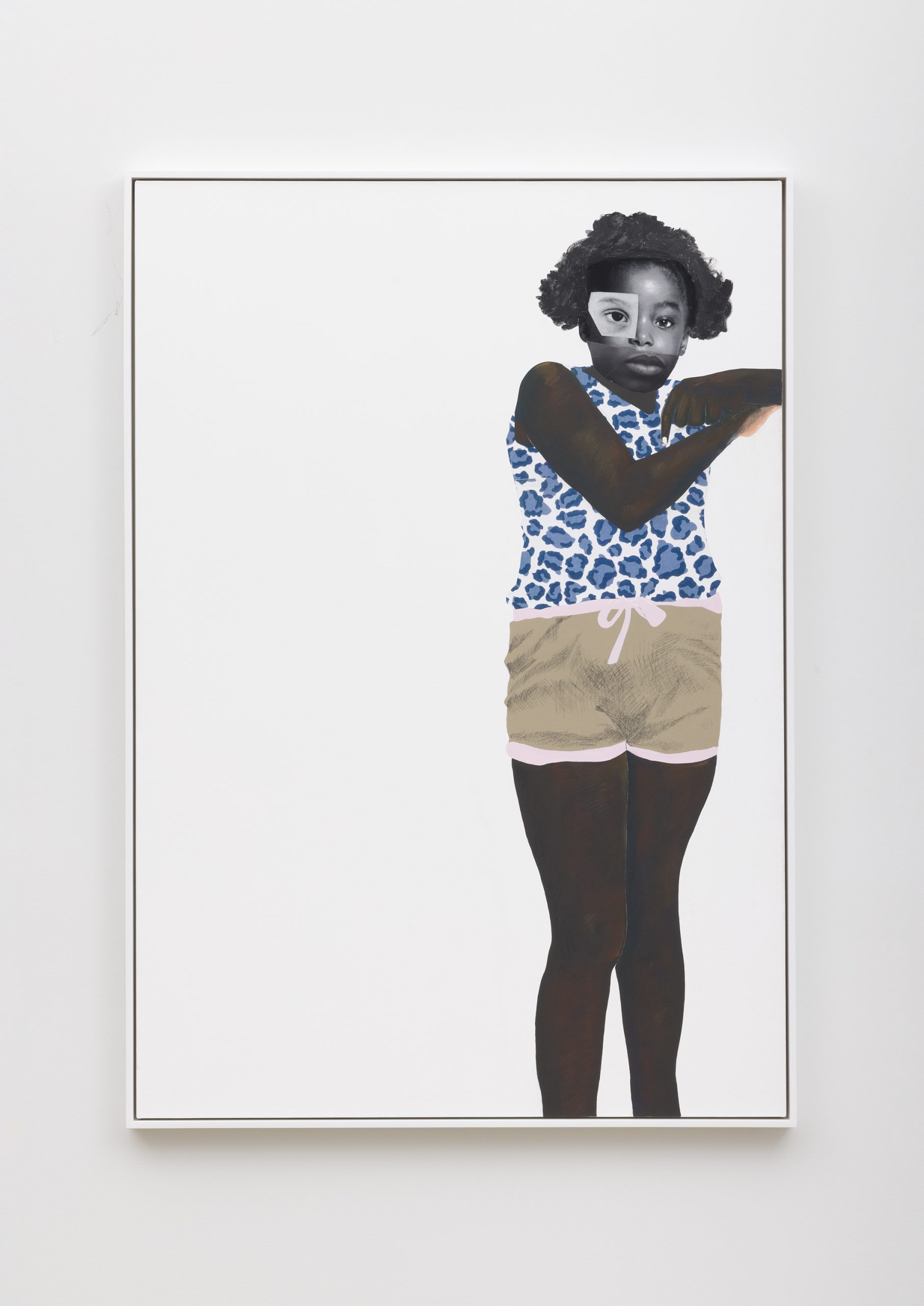Deborah Roberts (Born 1962 in Austin, TX) explores constructions of race and gender, as well as popular depictions of Black childhood in the United States. She combines found and manipulated images with hand-drawn and painted areas to create large-scale, emotionally charged paintings that explore the real and the possible forms of representations of Black children. Roberts employs found media to contend with dominant portrayals and narratives of Black youth, narratives that she often subverts through her use of collage. “Wading through my work,” Roberts explains, “you must look through multiple layers, double meanings, and symbols.”
For many years, Roberts has focused on depicting young Black girls (a decision she connects to her personal experience), producing a body of work that addresses ideas of vulnerability and strength. A signature work by the artist, Becoming, which Roberts has described as a self-portrait, presents a single figure against a white background, her face composed of three black-and-white photographs and the rest of her body and clothing rendered in paint and oil crayon. The girl, appearing somewhat timid, is set off to the right side, knees knocking together, her raised arms crossing over her body. The relationship of the girl to her body, as the title suggests, is in a state of becoming, juxtaposed between the photographic and the painted, the known and the unknown, the girl and the woman. “The girls who populate my work, while subject to societal pressures and projected images, are still unfixed in their identity,” says Roberts. Through the dimensionality of her characters, Roberts critiques the narrow beauty standards and the prevalent and persistent emotional, physical, and sexual stereotyping of Black girls and women. By bringing small moments of Black girlhood to large-scale paintings, Roberts offers an important correction to the history of art and gives visual form to the rich terrain of childhood.
